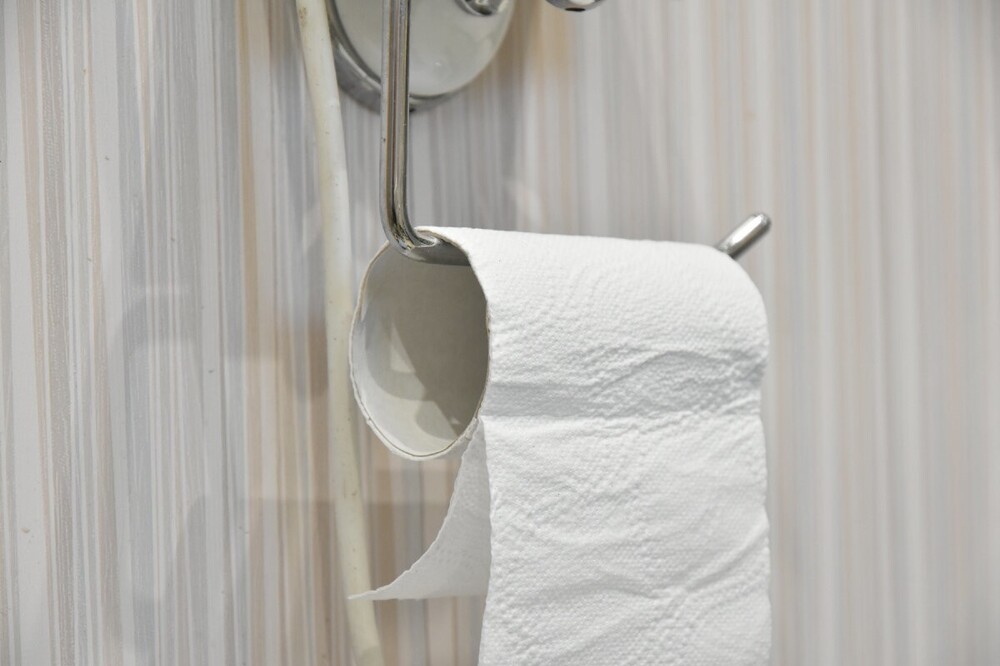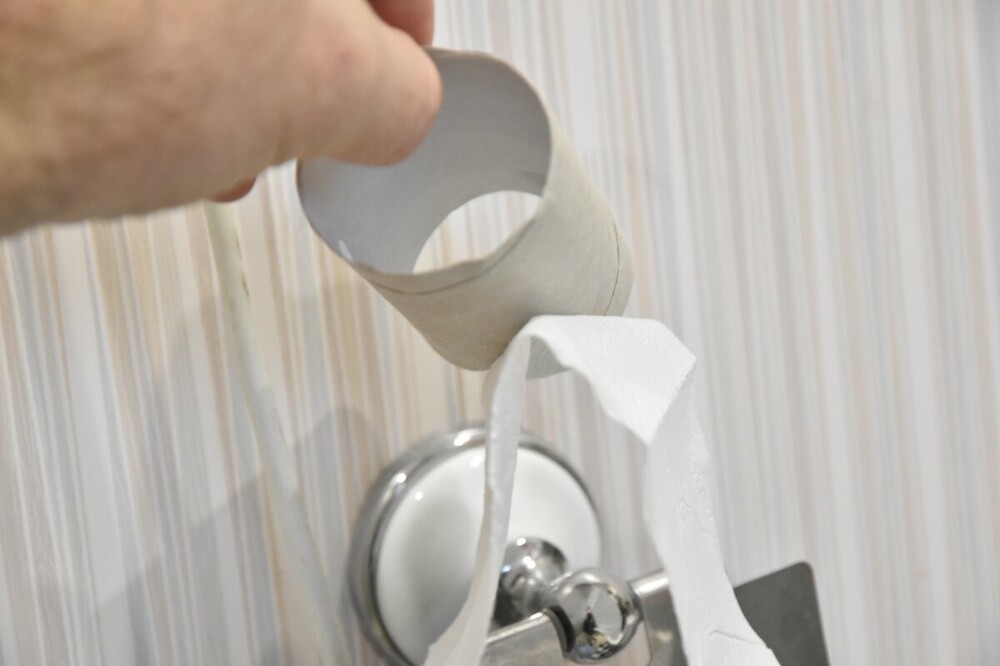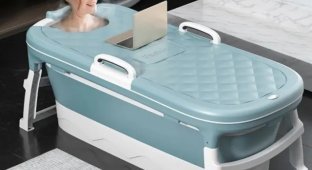How one woman fined a factory $1 million because of 3 pieces of toilet paper (6 photos)
Many inhabitants of our planet, at least those who do not live in the jungles and abandoned ocean islands, should be grateful to this woman. Very grateful. 
In general, the “paper” period in our restrooms began relatively recently. I don’t know what and how our ancestors ensured hygiene (Francois Rabelais seriously discussed this problem in “Gargantua and Pantagruel”), but obviously not with T-shirts and certainly not with fluffy kittens, as Rabelais suggested.
The first person who came up with the idea of using paper in restrooms... was... no, not Sarah Jessica Miller, but a fairly successful businessman from New York, a certain Joseph Gayetti. In 1856, he patented and a year later launched packs of “medical paper.”
It was the real birthday of toilet paper. Its inventor was so proud of his creation that he stamped his name right in the center on each napkin. A new and quite convenient product produced the effect of a bomb exploding. For some time, the fascinating two-word novel “Joseph Gayetty” became the most read in the world. Today, the “air freshener” composition took the palm from him with a 100% margin.
But we're getting a little off topic.
Despite the breakthrough in hygiene, Gayetti's toilet paper was not very convenient. It was problematic to take napkins out of a paper pack; they were blown around by drafts, and they constantly fell apart in the wrong places. In addition, they were made of rather thin paper, as a result of which the invention turned out to be too “breakthrough”.
Nevertheless, humanity has been using these napkins for about 30 years. Exactly until the next innovation in hygiene appeared - rolled toilet paper... with the height of comfort and convenience - perforation for more efficient tearing. 
This is how rolled toilet paper appeared in an almost modern form.
As you can see, she turned 133 years old!
However, there was one small difference from the modern one: the roll of paper was tightly attached with a thick layer of glue to a wooden sleeve, inside of which a hole was made so that the roll could be hung on special fasteners.
Over time, the wooden sleeve was replaced with a hollow cardboard one, but the method of fixing the paper on the sleeve remained unchanged: the last two or three turns of toilet paper were tightly glued to the sleeve with glue. 
- Well, what's wrong with that? - you say. - Well, they’re glued, and what next?
Here's what! The fact is that any toilet paper has a very bad property - it runs out at the wrong time, as in that very joke. If you go to the restroom consciously, with a sense of a fundamental approach to the future fulfillment of your duty to your own body and have free time to pay attention to the remaining paper resource in the roll, it’s okay. I grabbed a new roll from the shelf and no problems.
But sometimes... sometimes you forget. And after completing your duty, you sit on a white friend and twist a cardboard sleeve in your hands, which still has paper on it, but you won’t be able to use it.
It's glued!
And this was the situation until 1956, when... the same woman appeared in the arena of the history of household and hygienic amenities - the American Sarah Jessica Miller. 
The fact is that Americans are very demanding people as consumers. If a thing is supposed to do something, but doesn’t do it, or it causes inconvenience, this is a reason to go to court with a multi-million dollar lawsuit:
One day a woman took a glass of hot coffee and burned her hand with it. There was no indication on the cup that the coffee was hot. She filed a lawsuit and won $1 million;
another woman dried her wet hair after a shower by sticking her head in the oven and burning her hair. But the instructions didn’t say that you shouldn’t dry your hair like that. Claim - win 1 million;
the third also decided to dry her freshly washed cat in the microwave... then the same scheme continued - claim - 1 million.
Since then, on each cup it is written: the coffee is hot, the instructions for the oven say not to dry your hair, and for the microwave: do not dry your pets. 
Sarah Jessica Miller decided to sue the toilet paper manufacturer for not giving her the right to... use EVERYTHINGthe entire product. She, as a consumer, was deprived of the right to use the last 2-3 turns of toilet paper, and this, in addition to everyday inconvenience, caused her serious mental and moral suffering.
Therefore, she demanded from the manufacturer the standard amount for every dissatisfied American housewife - $1 million.
At the trial, the company's lawyers tried to object, saying that we should not forget to take a new roll. However, the court sided with the consumer: since he paid for the entire roll, then ALL the paper from the roll must be used completely... down to the very last piece of paper.
The case was decided in favor of the offended woman, she received 1 million dollars, of which almost 500 thousand were taken by satisfied lawyers. Manufacturers of toilet paper urgently changed the “design” of the rolls.
Since then, each roll of pipifax was attached to a cardboard sleeve with a thin strip of mild glue, so that any forgetful person could get a “last chance.” It turned out to be cheaper than writing on each roll: don’t forget to take a spare one, or something motivating on the roll itself.
So, holding a cardboard sleeve from a used roll in the morning, remember the name of the woman who gave civilized humanity the right to the “last sheet”.






























